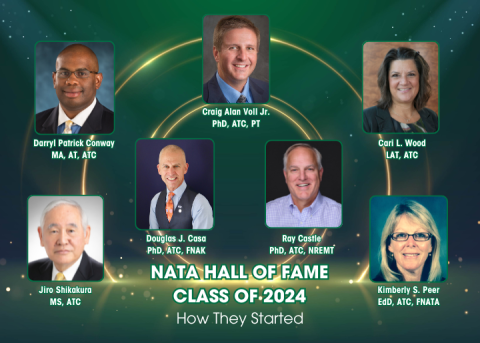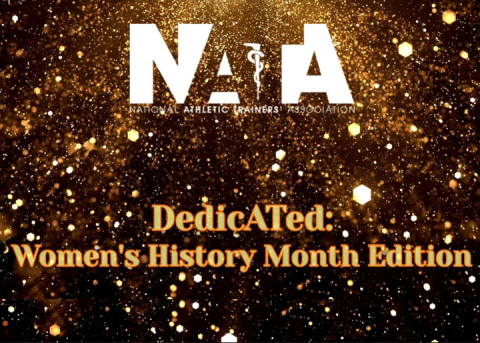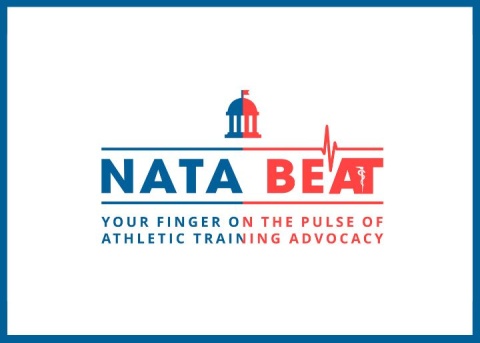
The NATA Hall of Fame is the apex of member recognition, celebrating a select group of athletic trainers who have advanced the profession and exemplified what it means to live a life of service.
More than a jacket, plaque and accolades, the NATA Hall of Fame is an honor bestowed on those who have dedicated countless hours honing their skills, mentoring the next generation of ATs and leaving a lasting legacy in the athletic training profession.
The May NATA News features the class of 2024, highlighting their careers and volunteer achievements, while giving insight into their lives as leaders in the profession.
The class of 2024 will be acknowledged and inducted into the NATA Hall of Fame during the 75th NATA Clinical Symposia & AT Expo in New Orleans.
In this article, the inductees delve into their professional origins, sharing why they chose to become athletic trainers.
Douglas J. Casa, PhD, ATC, FNAK
Simple. I had an exertional heat stroke while competing in a 10K track race at the Empire State Games in New York in 1985 between my junior and senior years of high school. I was very fortunate to receive outstanding care from the on-site athletic trainer, Kent Scriber, EdD, ATC, the emergency medical technicians, nurses and physicians at the hospital. That seminal moment 39 years ago shaped nearly every action in my life since that moment. The pursuit of the athletic training profession and my PhD were a natural extension to try and learn more about the condition and how it can be prevented and optimally treated, and how we can educate medical professionals to apply best practices.
RAY Castle, PhD, LAT, NREMT
I bounced around a couple of majors at Louisiana State University (LSU), starting with geology, but decided early in my second semester that studying rocks was not fun. In my second year, I changed majors to agricultural business – I grew up on a farm, raising cattle – and that lasted a year. I took a semester off in the fall, and after that semester break, I went back to LSU in spring 1987. In going back, my focus was on finding a degree around something I liked a lot, which was sports, so kinesiology had some great career options. In summer 1987, I had KIN 2500 Human Anatomy with Dr. Marty Broussard, who was also LSU’s director of athletic training. Toughest class I ever had, but he also fascinated me with the body and what he did as an athletic trainer. I started asking questions about athletic training and, in the fall, had several athletic training students in class with me. By mid-fall, I eventually asked, “So, how do you become an athletic training student?” And they connected me with Kathy Osborne-Davis, AT Ret., who was LSU’s head women’s athletic trainer. I visited with her in the first week of November 1987 and, afterward, she invited me to start under her tutelage in the women’s athletic training facility. After about two to three weeks, it really stuck, and I knew that athletic training was what I wanted to do. I haven’t looked back since.
Darryl Patrick Conway, MA, LAT, ATC
I played three sports in high school and had opportunities to play at the next level, but my parents always encouraged me to have a “fall back” plan in case sports didn’t work out. I wanted to find a career that allowed me to continue my passion for athletics and for helping people. I was attending Art Monk’s football camp in ninth grade and walked by the athletic training facility while George “Keoki” Kamou, AT Ret., from the Washington Redskins, was taping ankles in what seemed like warp speed. I hung out there and Keoki talked to me about what he did and the profession of athletic training.
Later that summer, I was at the Redskins training camp in Carlisle, Pennsylvania, and Keoki invited me into the athletic training room after practice one day where he and Lamar “Bubba” Tyer, AT Ret., talked to me about the profession and encouraged me to go to a Cramer Workshop at Salisbury State University. The next summer, I went to the Cramer Workshop and met Pat Lamboni, LAT, ATC, and John Bielawski, AT Ret., who also fueled my interest in the profession with their passion and work ethic.
After 11th grade, Mark Wagner, MS, LAT, ATC, and Bill Sheehan, ATC, from the Mason Dixon Basketball Camp in Emmitsburg, Maryland, gave me a job working as an athletic training student at the camp during the summer. My passion for the profession continued to grow as I had the opportunity to learn and work under Mark, Donna Ritenour, EdD, LAT, ATC, Kathy Malone Sparks, MA, LAT, ATC, Betsy King, AT Ret., Darren Odum, ATC, and others.
Kimberly S. Peer, EdD, ATC, FNATA
I began my schooling with an interest in pre-medicine. During my first year, I realized I was interested in the sports medicine discipline and chose to pursue that academic direction. I transferred from Miami University in Ohio to Kent State University, where I met John Faulstick, AT Ret., who mentored me throughout my educational and professional career in the field.
Jiro Shikakura, MS, ATC
When I was a student manager of the football team at Waseda University in Japan, I had the opportunity to support the Utah State University football team that was visiting Japan for the game, and that is when I first had contact with athletic trainers. After seeing their work, I decided to become an athletic trainer because I felt that athletic training was a profession lacking not only in Japanese university football teams, but also in all Japanese sports and that they were needed to provide health care services.
Craig Alan Voll Jr., PhD, ATC, PT
I discovered athletic training after I sustained a significant injury in high school. During my junior year, I dove into our high school pool and sustained fractures of my C5 and C6 vertebrae; I had struck the bottom of the pool, causing central cord syndrome. It was while rehabbing to regain the use of my arms that both my doctor and physical therapist talked to me about a profession called athletic training that allowed you to work with athletes and help them return to action following an injury. I went home from therapy that day, immediately rode my bike to the library and read about athletic training. That day, I realized this is exactly what I had been looking for. I have never regretted the decision my 15-year-old self made that day!
Cari L. Wood, LAT, ATC
I knew I wanted to work in medicine. When I discovered a career that involved both sports and medicine, I was hooked. I decided that I would also pursue an education degree because I enjoyed working with secondary school-aged athletes. I knew the education degree would give me an advantage in getting a position in a high school, even though athletic training was my first priority. I was fortunate to find a position in which I was a full-time AT, and in a location that I felt at home, so I stayed there for 30 years!





